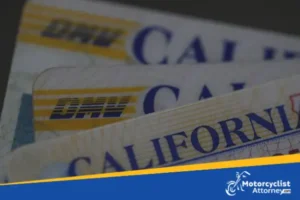
What is Comparative Fault in California, and Where Does it Apply?
The comparative negligence standard was established in California in 1975 by the state supreme court. This change in the law was made without waiting for action from the state legislature. Comparative negligence is a legal doctrine where courts can determine the percentage of fault of parties involved in an accident.
Comparative negligence, like contributory negligence, evaluates both parties’ contributions to an auto accident. In contrast to contributory negligence, comparative negligence compares the degree of fault of each party.
According to the comparative fault rule, if an injured individual contributes to the accident and their injury due to their own negligent actions, comparative negligence considers the proportion contributed to the damage at hand.
Even if an injured party is found to be partially at fault for the accident, they are still entitled to compensation. Instead of the inability to recover damages, courts deduct their share of responsibility from the final amount.
Aggrieved parties are held accountable for their contributions while not being left carrying the total expense.
Cases that may involve comparative negligence:
- Auto accidents
- Motorcycle and Bike Accidents
- Medical Malpractice
- Slip and Fall accidents
If the court decides that the plaintiff (injured party) was 40% at fault and the defendant (at-fault party) was 60% at fault, the plaintiff may only be awarded 60% of the damages.
Evidence-based evaluation of the plaintiff’s actions by the jury provides a more precise assessment of what the plaintiff may get from the case. In addition, if the plaintiff was significantly at fault for their harm, their compensation may be reduced.
In some situations involving personal harm in California, the law of pure comparative negligence may be applied.
If you were partially liable for your accident injuries, it is in your best interest to have a personal injury lawyer like Motorcyclist Attorney by your side to help you with your comparative fault claim.
Two Types of Comparative Negligence Law
There are two types of laws considered when evaluating California comparative negligence:
Pure Comparative Negligence
Regardless if the plaintiff is 99% at fault, the state authorizes the plaintiff to claim compensation for the 1% in which they were not at fault. In other words, accident victims, no matter how negligent they were in the accident, may receive an amount of compensation.
In “pure” comparative negligence states such as California, Florida, and New York, accident victims can collect compensation for their injuries even if they were more negligent than the defendant. Comparative negligence rules are practiced in different states throughout the USA.
Modified Comparative Negligence
The amount a plaintiff may recover for compensation is limited if a certain percentage can determine the plaintiff’s negligence. If a plaintiff is 51% or more at blame, they cannot seek compensation for damages and injuries. The 50% and 51% threshold criteria are a modification of comparative negligence.
Most states have dismissed contributory negligence statutes in favor of comparative negligence ones.
With the contributory negligence law, the plaintiff cannot claim compensation if they participated in an accident.
How Is Comparative Fault Determined?
In the state of California, if you were partly to blame for an accident that caused you injury, you may still be eligible for compensation. California comparative fault law helps determine how much you can get for payment.
Once it has been established that the injured party was partly to blame, the amount of compensation awarded to the plaintiff will decrease in proportion to how much that person was at fault. In a personal injury case, the judge will decide how much to detract from the jury’s decision based on how much responsibility the jury thinks the injured party and the defendant share.
Consider the following scenario: a person jaywalks and gets hit by a car that fails to stop at a stop sign. Even though the motorist was engaging in negligent driving that caused injury to the pedestrian, the accident may have been avoided if the pedestrian had not been jaywalking. As a result, the pedestrian’s actions were also deemed reckless, making negligence attributable to the person as well.
The pedestrian in the above scenario sustains injuries and damages worth $100,000. The jury determines that he is 25% responsible (degree of fault or portion of fault) for the pedestrian accident because he jaywalked recklessly. As a result, the pedestrian can file a claim against the driver for $75,000 of the $100,000 worth of damages in the accident claim.
An experienced personal injury attorney will help you understand the premise of your case, whether you share majority or minority responsibility in a vehicle accident, what the percentage of liability is, the types of damages involved, and the potential amount of monetary damages.
In tort law, comparative fault laws are applied when at least two parties share legal responsibility for an accident. The percentage of responsibility after an extensive investigation will determine how much a plaintiff can recover from the accident.
Using the tort concept of comparative negligence, the court will lower the damages a plaintiff may collect in a negligence action in proportion to how much each party was at blame. When the person who caused the injury was irresponsible and contributed partly to the harm, the court may divide liability equally between the injured party and the responsible party.
California Comparative Fault: Determining Liability
Insurance companies typically speculate at first who is to be blamed for the accident. Insurance companies usually agree to a settlement when both parties share some blame. This occurs when each side accepts equal responsibility for a single error or as previously mentioned, modified comparative negligence.
Alternatively, they may agree with the Fault States, in which the insurance company pays for the accident based on the amount of property damage or the cost of treating injuries.
But if one of the individuals rejects blame, the insurance firms agree to disagree, and court proceedings may take place.
Leaving their insured to “fend for themselves” is more complex and time-consuming. If this fails, the insurance company will initiate the arbitration procedure to resolve legal issues, insurance claims, the actual percentage of financial recovery, and determine each party’s degree of fault.
Accident-Related Injury? Contact Us!
You do not have to suffer or endure legal proceedings alone if you are injured in an accident due to someone else’s negligent actions. We will hold the responsible party accountable for their percentage of damages caused to your person. The dedicated team of lawyers, doctors, and case managers at Motorcyclist Attorney are here to help you recover the maximum award of damages possible.
In addition to assisting you to file a personal injury claim, we will handle all the complex paperwork of your case. We will also put you in touch with the best doctors and ensure you receive the best medical care.
We are dedicated to winning, this is why we work on a contingency fee basis and offer a No Fee Guarantee policy. This means you won’t need to pay us a single cent unless we win your case. Don’t hesitate to get in touch with Motorcyclist Attorney at (844) 2849437 for a free consultation on your case.




